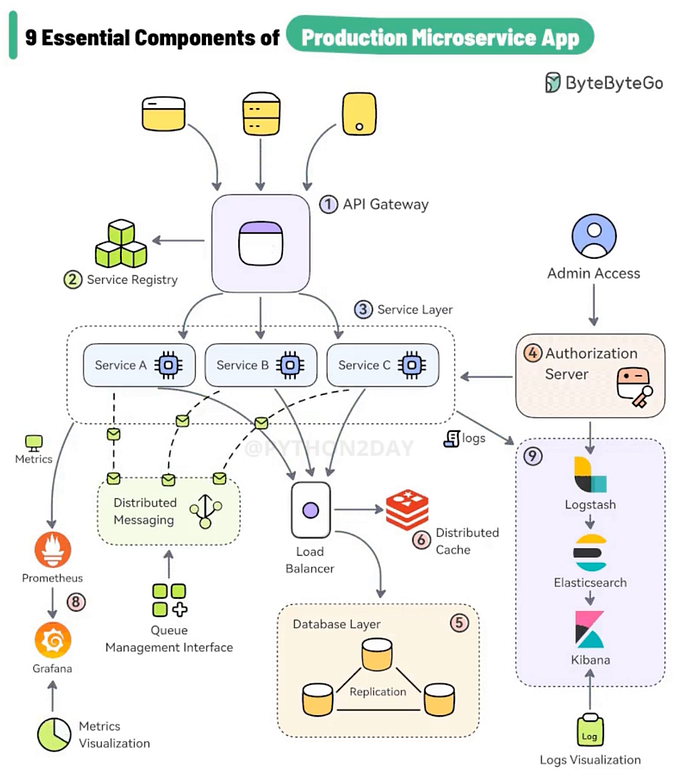The True Impact of Microservices: Insights into Modern Service Architectures
Service-oriented architectures (SOA) and microservices have become central topics in software development, promising modular, scalable, and independently deployable components. This 27th article in our series follows our previous discussion, “The Heart of Software Architecture: Understanding and Implementing the Main Component”, and explores the realities of using services in modern software systems.

The Rise of Service-Oriented Architectures
SOA and microservices are highly regarded for their ability to break down complex systems into smaller, manageable services. Each service operates independently, which is expected to facilitate flexible development and deployment. This decoupling should ideally lead to easier scalability and maintenance, allowing teams to focus on specific services without impacting the entire application.
Expectations from Service-Oriented Architectures
The key expectations driving the adoption of SOA and microservices include:
- Decoupling: Services are anticipated to function independently, minimizing the impact of changes and enabling individual services to be updated or replaced without significant disruptions.
- Independent Development and Deployment: It is believed that each service can be developed, tested, and deployed by different teams independently, promoting faster innovation and reducing time-to-market.
In this article, we will dive deep into these expectations, examining both the advantages and the challenges associated with service-oriented architectures. By understanding the practical realities of using services, developers can make more informed decisions on leveraging these architectures effectively in their projects.
Realities of Using Services

Decoupling
One of the main selling points of service-oriented and microservice architectures is the promise of decoupling — where services are independent and can evolve separately from each other. However, this independence is not always as clear-cut as it seems.
How Services Provide or Fail to Provide Complete Independence
Services are designed to operate in isolation, meaning that each service runs in its own process and manages its own data. This isolation should theoretically make it possible for services to operate and evolve independently. In practice, however, this decoupling is often partial.
While services might not share memory space or direct variable access, they frequently rely on shared databases, APIs, or messaging systems. For example, two services might both need access to the same user profile data. If the schema for this data changes, both services will need to be updated to handle the new format, thus coupling them through shared data structures.
Impact of Shared Data and Resources on Service Coupling
Even with well-defined interfaces, services can become tightly coupled through shared data and resources. Consider a set of services that handle different aspects of user management: one for authentication, another for user profile management, and a third for user activity tracking. These services might all interact with the same user database. If a new attribute is added to the user profile, all related services need to be updated to manage this new data correctly. This shared dependency can create a web of indirect coupling, where changes in one service ripple through to others.
Network dependencies can also contribute to coupling. Services often communicate over the network, and issues like network latency or failure can affect multiple services, requiring coordinated handling and retry mechanisms. Furthermore, services that share the same infrastructure, such as a cloud platform or container orchestration system, can be affected by changes or outages in these shared resources.
Independent Development and Deployment
The promise of independent development and deployment is another major advantage often attributed to service-oriented architectures. The idea is that each service can be developed, tested, and deployed by a dedicated team without impacting other services.
The Reality of Independent Development and Deployment
In reality, achieving true independence in development and deployment can be challenging. While services can be owned by different teams, their interdependencies often require coordinated efforts, especially during integration testing and deployment phases.
Architectural Significance of Services

Services and Architecture
In the context of software architecture, services can play a pivotal role, but their significance depends on how they are implemented and integrated within the system. Here’s when services become architecturally significant:
When Services Play a Key Architectural Role
- Defining Clear Boundaries: Services are essential in defining clear boundaries within an application. By encapsulating specific functionalities, services can help isolate changes and reduce the impact of modifications. For example, a payment processing service in an e-commerce application can be modified without affecting the inventory or user management services.
- Supporting Scalability: Architecturally significant services are designed to support scalability. This means they can be independently scaled based on demand. For instance, a search service in a retail application might need to handle a higher load during sales periods, and being a separate service allows it to scale out without affecting the entire system.
- Enhancing Fault Tolerance: Services can improve fault tolerance by isolating failures. If a non-critical service like a recommendation engine fails, it should not bring down the entire application. Architecturally, significant services are designed to handle such failures gracefully, ensuring the core functionalities remain unaffected.
- Facilitating Continuous Deployment: Services that are architecturally significant often support continuous integration and deployment practices. They allow teams to deploy updates to specific parts of the system without requiring a full-scale release. This accelerates the development cycle and enhances the system’s ability to adapt to changes.
Internal Architecture of Services
For services to be truly effective and architecturally significant, their internal architecture must adhere to sound architectural principles. Here’s why following architectural rules within services is crucial:
Importance of Following Architectural Rules Inside Services
- Adherence to SOLID Principles: The SOLID principles (Single Responsibility, Open/Closed, Liskov Substitution, Interface Segregation, and Dependency Inversion) are fundamental in designing maintainable and scalable services. Each service should have a single responsibility, be open for extension but closed for modification, and depend on abstractions rather than concrete implementations.
- Dependency Management: Services should manage their dependencies efficiently to avoid tight coupling. Using techniques like Dependency Injection (DI) ensures that services remain flexible and can be easily tested and maintained. This approach also aligns with the Dependency Inversion Principle, promoting a more modular and adaptable architecture.
- Component-Based Design: Internally, services should be designed using a component-based approach. This means breaking down the service into smaller, reusable components that adhere to the same architectural principles. For example, within a user management service, components might handle user authentication, profile management, and authorization separately. This internal modularity makes the service easier to manage and evolve.
- Following the Dependency Rule: The Dependency Rule states that source code dependencies must point only inward, toward higher-level policies. For services, this means the internal components should depend on abstractions, not concrete implementations. This rule helps maintain a clean separation between different layers of the service and ensures that changes in lower-level details do not ripple through the entire service.
- Handling Cross-Cutting Concerns: Services must effectively manage cross-cutting concerns such as logging, security, and error handling. These should be implemented in a way that does not clutter the core business logic, often through aspects or middleware. This separation ensures that the service’s primary functionality remains focused and uncluttered.
Designing services with careful attention to internal architecture ensures that they remain flexible and efficient. This thoughtful approach allows software systems to handle changes and growth more gracefully, making maintenance easier and reducing the risk of system-wide issues.
Benefits and Challenges of Using Services

Benefits
Scalability and Manageability
Services offer several advantages when it comes to building scalable and manageable systems. By breaking down an application into smaller, self-contained units, each service can be developed, deployed, and scaled independently. This modularity allows teams to focus on optimizing specific parts of the system without affecting others.
For instance, if a user authentication service experiences high load, it can be scaled independently of other services like payment processing or product catalog. This independent scalability ensures that resources are allocated efficiently, improving overall system performance.
Additionally, services promote better manageability by isolating different functionalities. Each service can be monitored, updated, and maintained without impacting the entire application. This separation of concerns simplifies troubleshooting and enhances the system’s resilience to changes and failures.
Challenges
Complexity in Managing Service-Based Systems
While services offer significant benefits, they also introduce complexities. One major challenge is managing the increased complexity that comes with a distributed system. With multiple services interacting across networks, ensuring reliable communication and data consistency becomes critical.
To address these issues, robust service orchestration and monitoring tools are essential. These tools help track service interactions, detect failures, and automate recovery processes. Additionally, implementing effective logging and tracing mechanisms can aid in diagnosing issues quickly.
Handling Cross-Cutting Concerns and Changes
Another challenge is dealing with cross-cutting concerns such as security, logging, and configuration management. These concerns often affect multiple services and require consistent implementation across the system. Using middleware or service meshes can help manage these concerns centrally, but they add another layer of complexity.
Adapting to changes is also more complicated in a service-based architecture. Adding a new feature might require changes in multiple services, necessitating careful coordination and thorough integration testing. To mitigate this, adopting practices such as continuous integration and continuous deployment (CI/CD) can streamline the deployment process and ensure that changes are tested and deployed smoothly.
Conclusion
In this article, we have explored the promises and realities of service-oriented architectures and microservices. We’ve discussed how services can offer significant benefits in terms of scalability and manageability, while also highlighting the challenges they introduce, particularly around decoupling, independent development, and cross-cutting concerns.
The internal architecture of services is essential for maintaining flexibility and efficiency. By following architectural rules and principles, developers can ensure that services are well-organized and capable of evolving with the system’s needs.
As you continue to design and implement services in your projects, remember the importance of careful planning and adherence to solid architectural principles. Share your experiences and insights in the comments below, and let’s learn from each other. If you found this article helpful, subscribe to stay updated with our latest discussions on software architecture and development best practices.








